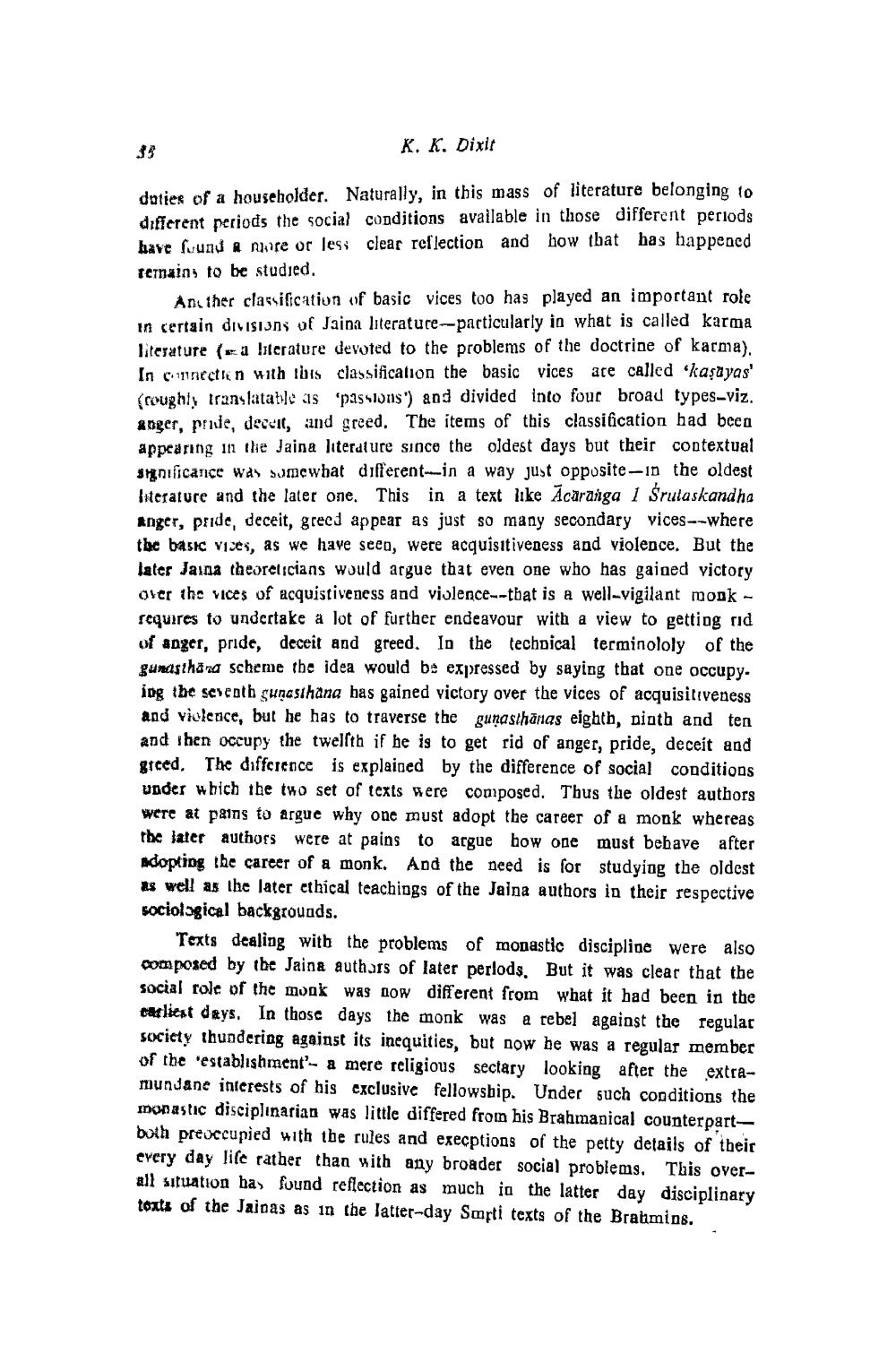________________
X. K. Dixit
doties of a householder. Naturally, in this mass of literature belonging to different periods the social conditions available in those different periods have suund a nire or less clear reflection and how that has happened femains to be studied.
Anther classification of basic vices too has played an important role in certain divisions of Jaina literature--pacticularly in what is called karma literature (v a literature devoted to the problems of the doctrine of karma), In connection with this classification the basic vices are called 'kaşayas' (roughly translatable as 'passions") and divided into four broad types-viz. anger, pede, decuit, and greed. The items of this classification had beca appearing in the Jaina literature since the oldest days but their contextual significance was somewhat different-in a way just opposite-in the oldest literature and the later one. This in a text like Acaranga 1 frutaskandha Anger, pride, deceit, grecd appear as just so many secondary vices--where the basic vices, as we have seen, were acquisitiveness and violence. But the later Jaina theoreticians would argue that even one who has gained victory Over the vices of acquistiveness and violence--that is a well-vigilant monk - requires to undertake a lot of further endeavour with a view to getting rid of anger, pride, deceit and greed. In the technical terminololy of the gunasthand scheme the idea would be expressed by saying that one occupy. ing the seventh gunasthana has gained victory over the vices of acquisitiveness and violence, but he has to traverse the gunasthānas eighth, niath and ten and then occupy the twelfth if he is to get rid of anger, pride, deceit and grced. The difference is explained by the difference of social conditions under which the two set of texts were composed. Thus the oldest authors were at pains to argue why one must adopt the career of a monk whereas the later authors were at pains to argue how one must behave after adopting the career of a monk. And the need is for studying the oldest as well as the later ethical teachings of the Jaina authors in their respective sociological backgrounds.
Texts dealing with the problems of monastic discipline were also composed by the Jaina authors of later perlods. But it was clear that the social role of the monk was now different from what it had been in the cadliest days. In those days the monk was a rebel against the regular society thundering against its inequities, but now he was a regular member of the establishment'- a mere religious sectary looking after the extramundane interests of his exclusive fellowship. Under such conditions the monastic disciplinarian was little differed from his Brahmanical counterpartboth preoccupied with the rules and execptions of the petty details of their every day life rather than with any broader social problems. This overall situation has found reflection as much in the latter day disciplinary torts of the Jaloas as in the latter-day Smrti texts of the Brahmins.




